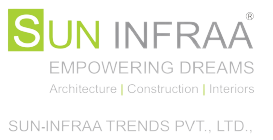Designing for Purpose: How Interior Layouts Improve Workflow Efficiency.
Interior design is not only about making a space look attractive. A smart interior layout can also make daily work easier, faster, and more productive. Whether it’s a home office, a retail space, or a company workspace, the way a space is arranged plays a big role in how well people can work in it. Designing with purpose means planning the space in a way that supports the tasks people do every day.
Here’s how a well-thought-out interior layout can improve workflow efficiency:
1. Encourages Better Movement
A good layout allows people to move around easily without bumping into things or each other. When everything is in the right place, workers can move freely from one task to another without wasting time. In a kitchen, for example, the sink, stove, and fridge are often placed in a triangle layout so cooking becomes quicker and smoother. The same idea can be used in workspaces by keeping tools and equipment close to where they’re used most.
2. Reduces Distractions
A smart interior design helps reduce noise and other distractions. This can be done by separating quiet areas from busy zones or using walls, screens, or furniture to block out noise. When employees or individuals can focus without constant interruptions, their work improves. This is especially important in offices, clinics, or creative studios where concentration is key.
3. Saves Time and Effort
When items are stored in the right places and tools are easy to reach, people don’t waste time searching for what they need. Organized layouts with built-in storage, labeled cabinets, and clear work zones help save time and effort. For example, in a salon or workshop, having all tools in arm’s reach allows workers to focus more on the task and less on looking for supplies.
4. Supports Team Collaboration
For businesses or team settings, an open and connected layout helps people communicate and collaborate more easily. Instead of walking across the room or sending messages, workers can talk face to face and share ideas quickly. At the same time, private corners or meeting rooms can be included to allow quiet conversations or deep focus when needed.
5. Improves Safety and Comfort
Efficient layouts also help improve safety. Wide walkways, proper lighting, and well-placed furniture reduce the risk of accidents. A safe and comfortable environment allows people to work with confidence and reduces stress. Comfortable seating, natural lighting, and air flow all add to a space that supports long hours of work without fatigue.
6. Adapts to Future Needs
A flexible layout can grow with your needs. Using movable furniture, adjustable desks, or modular workstations makes it easier to change the space when the team grows or the type of work changes. This future-ready design ensures the space remains efficient for years to come.
Conclusion
Designing a space with purpose improves more than just its appearance—it boosts how well people can work within it. An efficient layout helps reduce wasted time, encourages collaboration, and creates a more enjoyable work environment. Whether you’re designing a home office or a large workspace, planning the layout carefully can lead to better performance and greater satisfaction.



